The Evolution of Urban Planning
by Konstantin von der Schulenburg, Guest Contributor

Courtesy of Cantrell & Crowley
The Evolution of Urban Planning
by Konstantin von der Schulenburg, Guest Contributor

Courtesy of Cantrell & Crowley
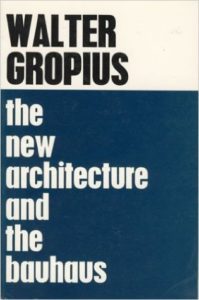 FROM THE VAULT: The New Architecture and the Bauhaus by Walter Gropius
FROM THE VAULT: The New Architecture and the Bauhaus by Walter Gropius
By Dr. Mark David Major, AICP, CNU-A, The Outlaw Urbanist contributor
The first 97 pages of The New Architecture and the Bauhaus (MIT Press with Foreword by Frank Pick) by Walter Gropius (published in 1965 but mostly written by Gropius earlier in 1923) is a virtuoso essay on the education of the architect in the modern era, which is must-read material for anyone interested about the educating of architects, urban designers and planners in today’s world. As is often the case with Modern architects, Gropius’ arguments begins to fall apart in a rather obvious way, in hindsight, over the last 12 pages when he attempts to extend his theories to the urban level. The less said about these last 12 pages, the better. Jane Jacobs in The Death and Life of Great American Cities has already – and better ably – tested the urban ideas of the International Style to destruction.
However, unlike many advocates of the International Style such as Le Corbusier, the writing of Gropius is clear, concise and easily understood in even layman terms; likely this is due to his German upbringing. In this book, Gropius spells out his ideas about architectural education within the context of the International Style’s preoccupation with industrialization and means of mass production. Nominally, these ideas are in reaction against the Beaux Arts academy model of architectural education during the 19th century. However, while spelling out his differences with the Beaux Arts in the promotion of the Bauhaus model, Gropius is also very careful to place the Bauhaus within the same, larger tradition of architectural education. This makes The New Architecture and the Bauhaus a very important book for the contemporary student/educator to better understand how our model of architectural education today also fits and complements the same tradition. This makes The New Architecture and the Bauhaus a richly rewarding read that is also easy to digest. The entire book can be read in one or two sittings.
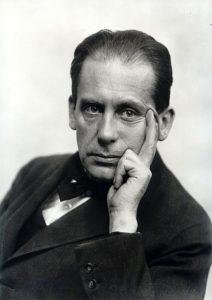 About Walter Gropius
About Walter Gropius
Walter Gropius, in full Walter Adolph Gropius (born May 18, 1883, Berlin, Germany and died July 5, 1969, Boston, Massachusetts, USA), was German American architect and educator who, particularly as director of the Bauhaus (1919–28), exerted a major influence on the development of modern architecture. His works, many executed in collaboration with other architects, included the school building and faculty housing at the Bauhaus (1925–26), the Harvard University Graduate Center, and the United State Embassy in Athens, Greece.
 The New Architecture and the Bauhaus
The New Architecture and the Bauhaus
by Walter Gropius with Foreword by Frank Pick
MIT Press Paperback, 112 pages
March 15, 1965
ISBN-10: 0262570068
ISBN-13: 978-0262570060
You can purchase The New Architecture and the Bauhaus by Walter Gropius from Amazon here.
From the Vault is a series from the Outlaw Urbanist in which we review art, architectural and urban design texts, with an emphasis on the obscure and forgotten, found in second-hand bookstores.
“VIEWPOINT: Theory Makes Perfect”, was the most read post of the 2014 on The Outlaw Urbanist. We would have never guessed. The Outlaw Urbanist had visitors from 101 countries around the world with the most coming in order from: the United States, followed closely by the United Kingdom and Israel; the last being something of a surprise.
“Good theory leads to good planning. Normative theory – without quantitative observation and validation using scientific method – is nothing more than subjective opinion masquerading as theoretical conjecture.”
Viewpoint | Theory Makes Perfect
By Dr. Mark David Major, AICP, CNU-A, The Outlaw Urbanist contributor
Regularly brandishing the bogeyman of Modernism, the architects of CIAM, and their industrial age vernacular to deride scientific method and endorse normative theory is a late-20th century practice du jour of the planning profession and education. It is a lot like suggesting a rape victim needs to marry her attacker to get over the experience. A shocking metaphor? Perhaps, but it is not a casual choice.
Early 20th century Modernist planning was a normative theory that aspired to science in its assertions. However, Modernism fails even the most basic tenets of being science. It was long on observation and way short on testing theoretical conjectures arising from those observations. Without scientific method to test its conjectures, Modernism in its infancy never made the crucial leap from normative to analytical theory. Instead, the subjective opinions of the CIAM architects and planners were embraced – sometimes blindly – by several generations of professionals in architecture and planning, and put into practice in hundreds of towns and cities. Today, for the most part, Modernism has finally been tested to destruction by our real world experience of its detrimental effects, though we continue to suffer from its remnants in the institutionalized dogma of planning education and the profession. Nonetheless, it has – at long last – made the transformation from normative to analytical theory and validated as a near-complete failure; at least in terms of town planning.
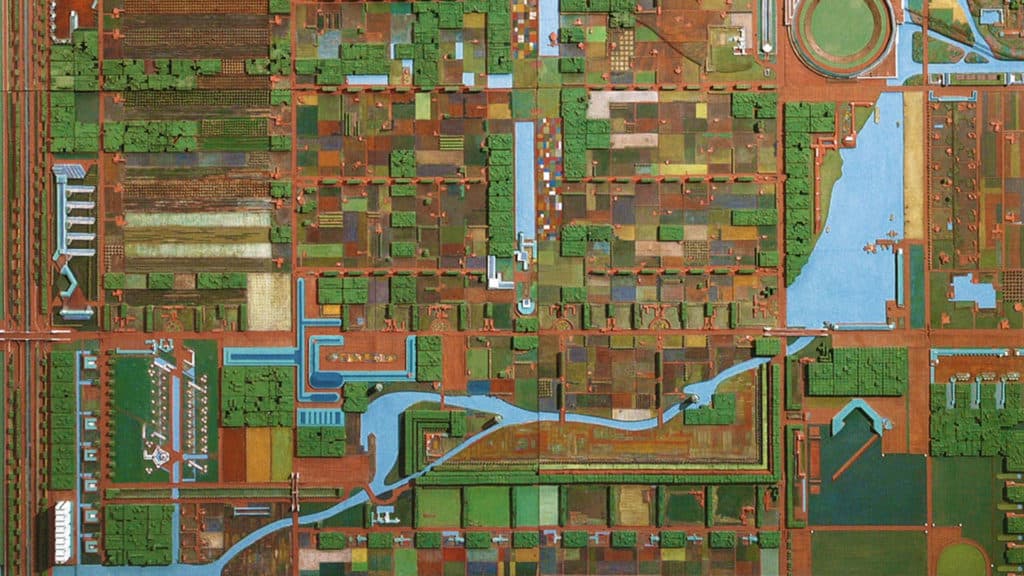
Modernism is a failure of normative theory, not scientific method. Ever since Robert Venturi published his twin polemics Complexity and Contradiction in Architecture/Learning from Las Vegas, it has been chic to assert that Modernism – and by implication, science – was responsible for the rape of our cities during the 20th century. A direct line can be drawn from the proliferation of late-20th/early-21st century suburban sprawl to Frank Lloyd’s Wright Broadacre City, and even further back to its infancy in Ebenezer Howard’s Garden City. However, like a DNA test freeing a falsely accused rapist, scientific method reveals the true culprit is, in fact, normative theory. The 20th century is a wasteland littered with normative theories: modernism, futurism, post-modernism, deconstructivism, traditionalism, neo-suburbanism and many more ‘-isms’ than we can enumerate. After the experience of the 20th century, it seems absurd to suggest we require more theoretical conjecture without scientific validation, more opinion and subjective observation – that is, less science – if we want to better understand the “organized complexity of our cities” (Jacobs, 1961). Sometimes it seems as if the planning profession and education has an adverse, knee-jerk reaction to anything it does not understand as “too theoretical”. Of course, the key to this sentence is not that it is “too theoretical” but rather that so many do “not understand” the proper role of science and theory in architecture and planning, in particular, and society, in general.
Science aspires to fact, not truth. The confusion about science is endemic to our society. You can witness it every time an atheist claims the non-existence of God on the basis of science. However, science does not aspire to truth. Not only is ‘Does God exist?’ unanswerable, it is a question any good scientist would never seek to answer in scientific terms. It is a question of faith. The value judgment we place on scientific fact does not derive from the science itself. It derives from the social, religious or cultural prism through which we view it. Right or wrong is the purview of politicians, philosophers and theologians. There are plenty – perhaps too many – planners and architects analogous to politicians, philosophers and theologians and not enough of the scientific variety. And too often, those that aspire to science remain mired in the trap of normative theory and institutionalized dogma. The Modernist hangover lingers in our approach to theory. But we require less subjective faith in our conjectures and more objective facts to test them. We persist with models that are colossal failures. When we are stuck in traffic, we feel like rats trapped in a maze. We apply normative theory to how we plan our transportation networks and fail to test the underlining conjecture. The robust power of GIS to store and organize vast amounts of information into graphical databases is touted as transforming the planning profession. But those that don’t understand science, mistake a tool of scientific method for theory. We project population years and decades into the future, yet fail to return to these projections to test and expose their (in)validity, refine the statistical method and increase the accuracy of future projections. And we hide the scientific failings of our profession behind the mantra, “it’s the standard.”
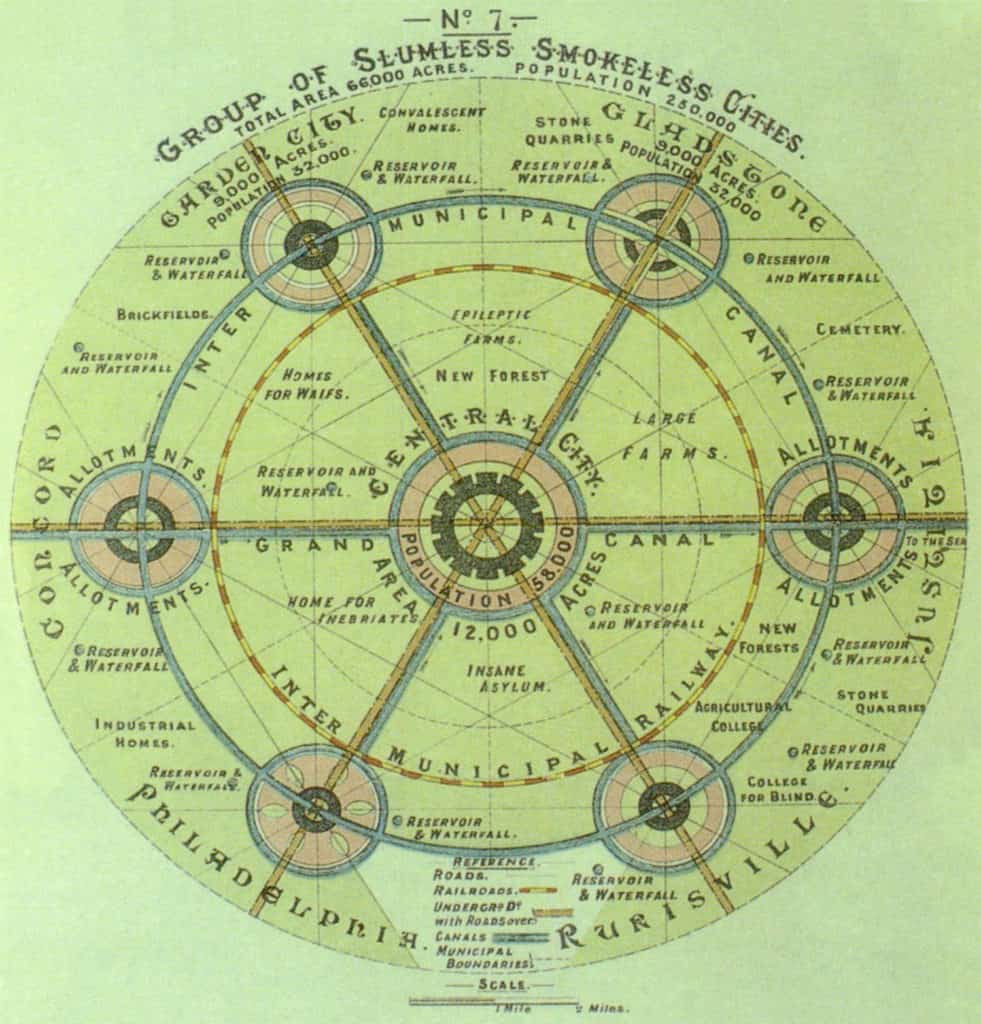
We require analytical theory and objective knowledge. If the facts do not support our conjectures, then they need to be discarded. In normative theory, ideas are precious. In analytical theory, they are disposable in favor of a better conjecture on the way to a scientific proof. Scientific method is the means to test and validate or dispose of theory. Our profession and communities have paid a terrible price for the deployment of normative theory. However, quantitative observation and analysis of its failings has offered enlightenment about how to proceed confidently into the future. The work of notable researchers in Europe and the United States are leading the profession towards an analytical theory of the city. Even now, we will be able to deploy scientific method to derive better theory about the physical, social, economic and cultural attributes of the city. This leap forward will eventually propel planning out of the voodoo orbit of the social sciences and into the objective knowledge of true science. Until then, we need to focus a bit more on getting there and less time raising the SPECTRE of dead bogeymen to endorse the creation of entirely new ones.
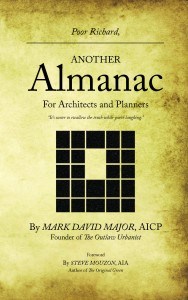 Purchase your copy of Poor Richard, Another Almanac for Architects and Planners (Volume 2) today!
Purchase your copy of Poor Richard, Another Almanac for Architects and Planners (Volume 2) today!
Available in print from Amazon, CreateSpace, and other online retailers.
Available on iBooks from the Apple iTunes Store and Kindle in the Kindle Store.
“Good theory leads to good planning. Normative theory – without quantitative observation and validation using scientific method – is nothing more than subjective opinion masquerading as theoretical conjecture.”

Viewpoint | Theory Makes Perfect
By Mark David Major, The Outlaw Urbanist contributor
Regularly brandishing the bogeyman of Modernism, the architects of CIAM, and their industrial age vernacular to deride scientific method and endorse normative theory is a late-20th century practice du jour of the planning profession and education. It is a lot like suggesting a rape victim needs to marry her attacker to get over the experience. A shocking metaphor? Perhaps, but it is not a casual choice.
Early 20th century Modernist planning was a normative theory that aspired to science in its assertions. However, Modernism fails even the most basic tenets of being science. 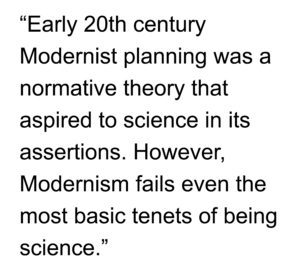 It was long on observation and way short on testing theoretical conjectures arising from those observations. Without scientific method to test its conjectures, Modernism in its infancy never made the crucial leap from normative to analytical theory. Instead, the subjective opinions of the CIAM architects and planners were embraced – sometimes blindly – by several generations of professionals in architecture and planning, and put into practice in hundreds of towns and cities. Today, for the most part, Modernism has finally been tested to destruction by our real world experience of its detrimental effects, though we continue to suffer from its remnants in the institutionalized dogma of planning education and the profession. Nonetheless, it has – at long last – made the transformation from normative to analytical theory and validated as a near-complete failure; at least in terms of town planning.
It was long on observation and way short on testing theoretical conjectures arising from those observations. Without scientific method to test its conjectures, Modernism in its infancy never made the crucial leap from normative to analytical theory. Instead, the subjective opinions of the CIAM architects and planners were embraced – sometimes blindly – by several generations of professionals in architecture and planning, and put into practice in hundreds of towns and cities. Today, for the most part, Modernism has finally been tested to destruction by our real world experience of its detrimental effects, though we continue to suffer from its remnants in the institutionalized dogma of planning education and the profession. Nonetheless, it has – at long last – made the transformation from normative to analytical theory and validated as a near-complete failure; at least in terms of town planning.
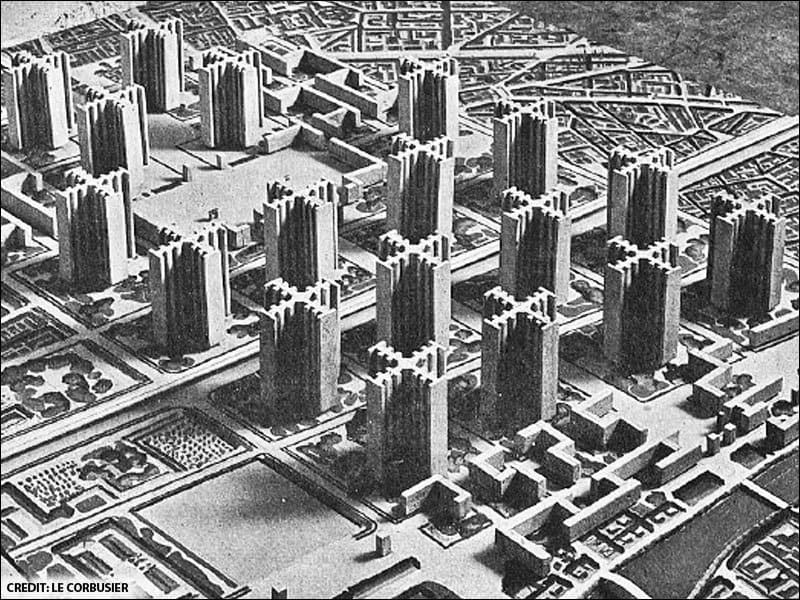
Modernism is a failure of normative theory, not scientific method. Ever since Robert Venturi published his twin polemics Complexity and Contradiction in Architecture/Learning from Las Vegas, it has been chic to assert that Modernism – and by implication, science – was responsible for the rape of our cities during the 20th century. A direct line can be drawn from the proliferation of late-20th/early-21st century suburban sprawl to Frank Lloyd’s Wright Broadacre City, and even further back to its infancy in Ebenezer Howard’s Garden City. However, like a DNA test freeing a falsely accused rapist, scientific method reveals the true culprit is, in fact, normative theory. The 20th century is a wasteland littered with normative theories: modernism, futurism, post-modernism, deconstructivism, traditionalism, neo-suburbanism and many more ‘-isms’ than we can enumerate. After the experience of the 20th century, it seems absurd to suggest we require more theoretical conjecture without scientific validation, more opinion and subjective observation – that is, less science – if we want to better understand the “organized complexity of our cities” (Jacobs, 1961). Sometimes it seems as if the planning profession and education has an adverse, knee-jerk reaction to anything it does not understand as “too theoretical”. Of course, the key to this sentence is not that it is “too theoretical” but rather that so many do “not understand” the proper role of science and theory in architecture and planning, in particular, and society, in general.
Science aspires to fact, not truth. The confusion about science is endemic to our society. You can witness it every time an atheist claims the non-existence of God on the basis of science. However, science does not aspire to truth. Not only is ‘Does God exist?’ unanswerable, it is a question any good scientist would never seek to answer in scientific terms. It is a question of faith. The value judgment we place on scientific fact does not derive from the science itself. It derives from the social, religious or cultural prism through which we view it. 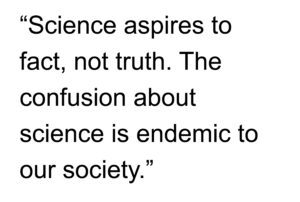 Right or wrong is the purview of politicians, philosophers and theologians. There are plenty – perhaps too many – planners and architects analogous to politicians, philosophers and theologians and not enough of the scientific variety. And too often, those that aspire to science remain mired in the trap of normative theory and institutionalized dogma. The Modernist hangover lingers in our approach to theory. But we require less subjective faith in our conjectures and more objective facts to test them. We persist with models that are colossal failures. When we are stuck in traffic, we feel like rats trapped in a maze. We apply normative theory to how we plan our transportation networks and fail to test the underlining conjecture. The robust power of GIS to store and organize vast amounts of information into graphical databases is touted as transforming the planning profession. But those that don’t understand science, mistake a tool of scientific method for theory. We project population years and decades into the future, yet fail to return to these projections to test and expose their (in)validity, refine the statistical method and increase the accuracy of future projections. And we hide the scientific failings of our profession behind the mantra, “it’s the standard.”
Right or wrong is the purview of politicians, philosophers and theologians. There are plenty – perhaps too many – planners and architects analogous to politicians, philosophers and theologians and not enough of the scientific variety. And too often, those that aspire to science remain mired in the trap of normative theory and institutionalized dogma. The Modernist hangover lingers in our approach to theory. But we require less subjective faith in our conjectures and more objective facts to test them. We persist with models that are colossal failures. When we are stuck in traffic, we feel like rats trapped in a maze. We apply normative theory to how we plan our transportation networks and fail to test the underlining conjecture. The robust power of GIS to store and organize vast amounts of information into graphical databases is touted as transforming the planning profession. But those that don’t understand science, mistake a tool of scientific method for theory. We project population years and decades into the future, yet fail to return to these projections to test and expose their (in)validity, refine the statistical method and increase the accuracy of future projections. And we hide the scientific failings of our profession behind the mantra, “it’s the standard.”

We require analytical theory and objective knowledge. If the facts do not support our conjectures, then they need to be discarded. In normative theory, ideas are precious. In analytical theory, they are disposable in favor of a better conjecture on the way to a scientific proof. Scientific method is the means to test and validate or dispose of theory. Our profession and communities have paid a terrible price for the deployment of normative theory. However, quantitative observation and analysis of its failings has offered enlightenment about how to proceed confidently into the future. The work of notable researchers in Europe and the United States are leading the profession towards an analytical theory of the city. Even now, we will be able to deploy scientific method to derive better theory about the physical, social, economic and cultural attributes of the city. This leap forward will eventually propel planning out of the voodoo orbit of the social sciences and into the objective knowledge of true science. Until then, we need to focus a bit more on getting there and less time raising the SPECTRE of dead bogeymen to endorse the creation of entirely new ones.